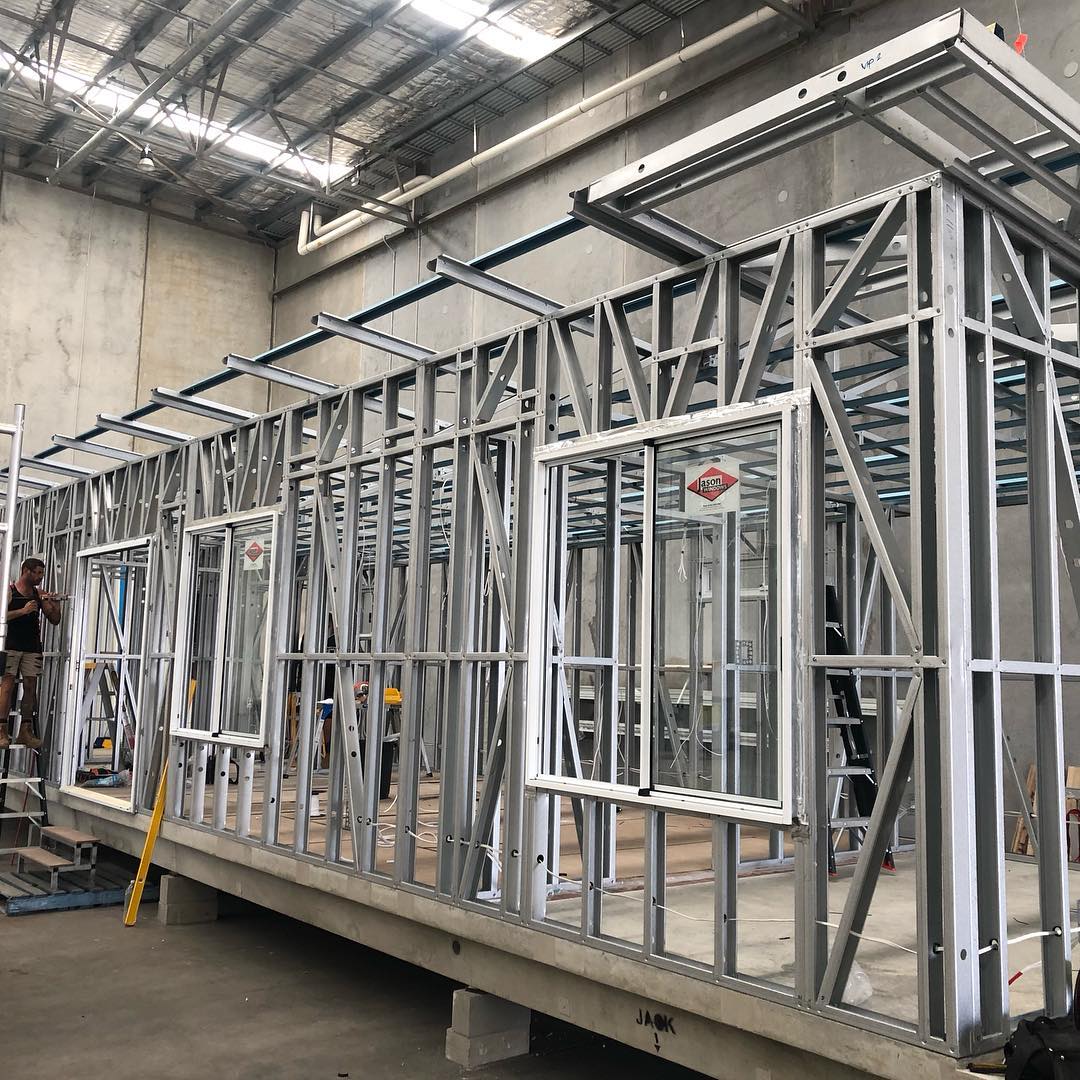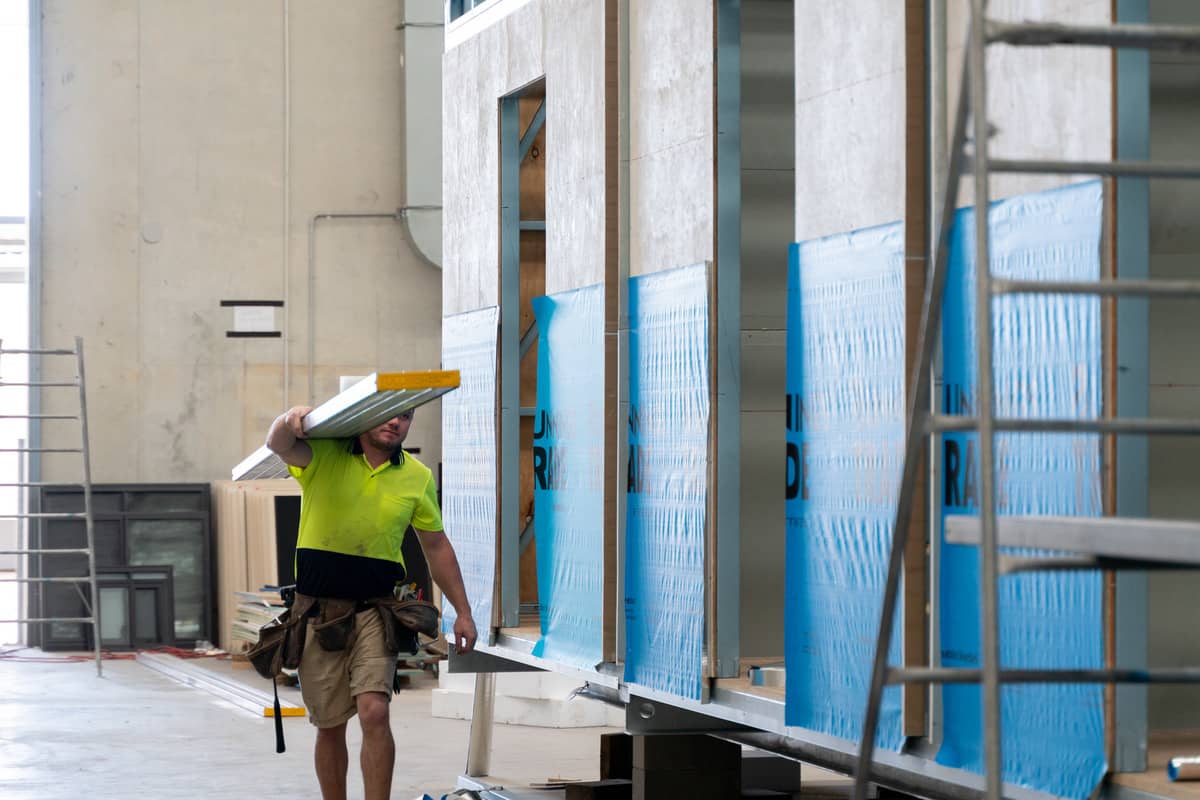Modular construction is increasingly sought after for commercial and residential projects. If you are considering modular construction, you will likely encounter questions regarding your construction preferences.
Two of the most frequently used types are volumetric and panelised construction. Understanding the characteristics of each is necessary if you are (or will be) planning a modular construction project.
Key Summary
- Volumetric Construction- Refers to creating complete three-dimensional modules, also known as pods. The modules are crafted off-site and are nearly ready to use when delivered. The pods help to jump-start the production of the modular structure.
- Panelised Construction- This method crafts partially finished panels that will go to the job site, where they will be used to construct modular buildings.
Volumetric Construction
What is Volumetric Construction?
This method of producing three-dimensional modules (also called pods) in an off-site factory. The pods are complete and have walls, floors, and ceilings. Completed modules are delivered to the construction site and assembled to create a finished building.
What are Some Advantages of Using Volumetric Construction?
- Speed of Construction– Faster assembly on-site since most work is done off-site.
- Cost Efficiency– Reduced labor costs and material waste.
- Quality Control– Enhanced quality due to controlled factory conditions
- Sustainability– Volumetric construction allows for a reduced impact on the environment in several ways.
- Reducing material waste because of the precise nature of the construction
- The opportunity for recycling components is increased because the pods are built in a factory setting, and collecting the construction waste is simple.
- Off-site construction lowers the number of large vehicles needed on the construction site.
Ideal Applications
Volumetric modular construction is particularly suited for projects that benefit from efficient, repetitive building processes and a faster timeline. It’s ideal for:
- Repetitive Units: Projects with numerous identical units—such as worker’s accommodation, classrooms, or office buildings—see significant advantages from the streamlined production of volumetric modules.
- Accelerated Timelines: By constructing modules off-site while preparing the building site, overall project timelines can be reduced by 30-50%, making this method excellent for time-sensitive projects.
- Consistent Quality: Built in a controlled factory environment, volumetric modules benefit from enhanced quality control and manufacturing precision, ensuring each unit meets high standards.
- Minimal On-Site Disruption: With most of the construction taking place off-site, volumetric modular construction reduces noise, waste, and general disruption at the building site, making it a practical option for projects in sensitive or populated areas.
Panelised Construction
What is Panelised Construction?
Panelised construction involves prefabricating pieces of transportable buildings (panels) in an off-site factory. Then, the panels are transported and assembled the individual panels to create the structure of the modular buildings.
What are Some Advantages of Using Panelised Construction?
- Precision- Production in a factory makes precision easier than on a job site.
- Faster Project Completion- Prefabrication keeps the project moving quickly.
- Opportunities for Customisation- Because the builds are made specifically for your project, you can plan a modular building to suit your needs.
- Enhanced Safety- From start to finish, all aspects of your modular building are carefully controlled. This leaves little to chance and makes each step safer. The chances of accidents on the job are also reduced.
Ideal Applications
Panelised construction is an excellent choice for projects that benefit from flexibility and unique design features. It’s particularly suited for:
- Projects Requiring Customisation: Ideal for builds that need unique designs or diverse layouts, panelised construction accommodates customisation that might be difficult with standardised volumetric modules.
- Architectural Variety: Panelised systems make it easier to incorporate distinctive features and architectural elements, providing greater creative freedom to meet specific design visions.
Key Differences Between Volumetric vs Panelised Construction
Volumetric and panelised construction methods of modular construction offer a number of valuable advantages. There are also a few differences that dictate when to use one type rather than the other.
- Design complexity often dictates which method will give the best performance.
- Transportation logistics can point to one type of construction being a better option.
- Flexibility is sometimes necessary on job sites, making the most adaptable component the best choice.
| Aspect | Volumetric Construction | Panelised Construction |
| Components | These are total package components that require minimal construction. | Panels are not fully finished and must be assembled. |
|
Transportation |
The size and weight of the modules may require specialised transport. | Easily stacks for delivery to the job site. |
|
Design Constraints |
Issues with lifting and transporting can create design constraints. | Offers exceptional customisation and design flexibility |
|
Speed and Efficiency |
Fast because several similar modules can be made at once | It may require more on-site work to assemble but can be produced quickly, |
|
Logistics |
It can be complicated because the modules can be large and heavy. | It is simpler to transport because the panels can be stacked. |
|
Project Suitability |
It is ideal to use if your project has straightforward or recurring features. | Panels easily adapt to numerous design possibilities. |
|
Weather Vulnerability |
Moisture can affect modules until they are secured inside | Panels are less vulnerable to weather because they are easy to store indoors |
|
Cost |
Potential for higher upfront costs to ensure completion of modules | Lower costs because panels can be made efficiently due to the standardisation process |
Example Use Cases
- Volumetric construction is ideal for simple, repetitive designs, such as an office building with numerous cubicles.
- Panelised construction components take up less space when being transported to construction sites. Likewise, volumetric construction elements need equipment on site for unloading.
- If your project requires the ability to pivot mid-project or if adaptability is vital to the project, panelised construction lends itself to these situations.
Volumetric and panelised construction methods are instrumental in building modular structures. Both types are ideal in certain situations and facilitate construction projects. If you need guidance or consultation in regards to your next transportable building, contact our team at Fox Transportables.


